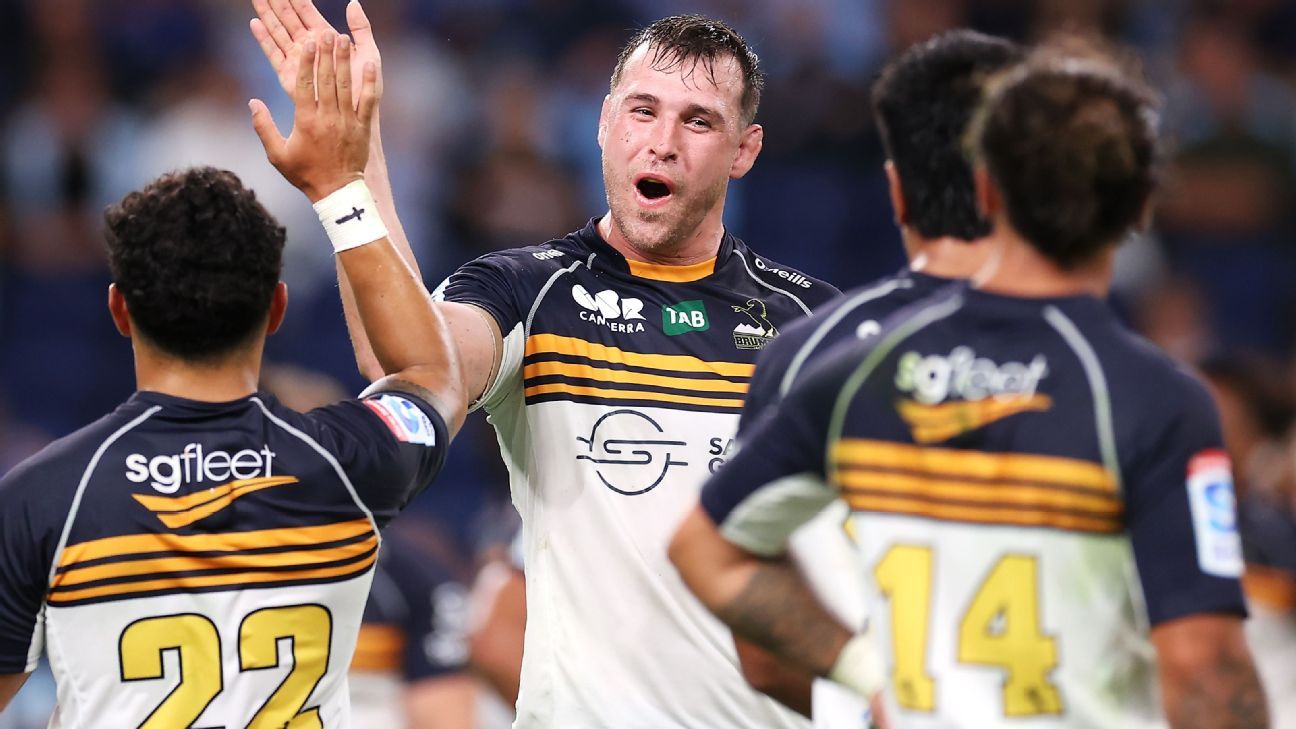The move to speed up Super Rugby Pacific and increase the amount of ball-in-play time is off to a promising start, with the Round 1 numbers now confirmed to have been an improvement on those from 2022.
The trial laws, which prohibit huddles before lineouts and have placed a firm time limit for the setting of scrums and shots at goal, were generally well received by players, coaches and fans alike, across the weekend, as referees issued multiple hurry-ups and the Rebels’ Ryan Louwrens was even pinged for taking too long to clear the ball from the base of the ruck.
The ability of the TMO to interject has also been reduced in Super Rugby Pacific.
And numbers provided to ESPN have now confirmed the widespread perception that fans witnessed more action over the weekend compared with the opening round last year.
According to Oval Insights, the average ball in play for Round 1 was 1:54 longer than that of the 2022 season. The mean for 2023 was 31.21 compared to 29.27 last year.
The Crusaders-Chiefs game topped the Round 1 fixtures with a ball-in-play time of 38.15, while the Waratahs-Brumbies contest in Sydney was at the other end of the scale at 26.29. Still, that figure on Friday night in Sydney was a whopping 4:32 improvement on the lowest game from Round 1 in 2022.
While it is only one weekend of data, Super Rugby Pacific administrators will be encouraged by the results. It also comes after similarly positive progress in the Six Nations where many of the same tweaks to prevent time wasting has also been implemented.
The Ireland-France clash in week 2 of the tournament recorded an astonishing 46:12 minutes of ball in play time. Clearly there have been other less appealing affairs, but if the ball-in-play trend continues upwards then World Rugby will be under pressure to implement the laws permanently worldwide.
Brumbies lock Nick Frost, who was on Wednesday awarded the Wallabies’ Rookie of the Year for 2022, said it was only early days but that already players understood they needed to adapt.
“Obviously it’s a little bit of a trial period for either team, and obviously the referees have got to get used to it and so have the players,” he said.
“But again, we [the Brumbies] time ourselves anyway from a lineout point-of-view, we talk about getting in and keeping the ball in play. As I said, the whole thing, first and foremost, is around safety at the scrum, so obviously we’ve got a shock clock there.
“But I think in general the whole thing is a bit of a balance, we’ve got to protect some of the integrity of the game around our scrum and our lineout, that’s what makes us different compared to the other sports. But it’s good that we have a bit of a quicken up there.
“But the TMO one is probably the biggest one the players are pretty happy about; obviously we’re not having full judiciary hearings on the field, we’re just having a quick decision and then going forward.”
While Frost played in the Round 1 game which had the least ball-in-play time, it was noticeable after halftime how it opened up as fatigue began to have an impact. The first half had also seen multiple scrum resets and penalties, as the two forward packs struggled with their timing and engagement under referee Nic Berry.
The Brumbies had also been forced into a late change on the bench with John Ulugia replacing Lachie Lonergan, the scrum contest then further impacted by Connal McInerney’s early concussion and Waratahs prop Angus Bell’s toe injury, which has now likely ruled the Wallabies front-rower out for the rest of NSW’s Super Rugby Pacific campaign.
While Frost said he hadn’t noticed a huge amount of difference on Friday night, he believes time can be saved at the scrum in particular.
“We had a few trial matches in the preseason and it’s just going to be quite prevalent that it’s on the forefront of the referee’s mind, it’s on the forefront of our mind,” he said.
“We’ve trained it for a few weeks now. It doesn’t feel too quick, it’s just sometimes around the scrum ones; if the ball is there, let’s just play footy. It’s better for both team instead of seeing two or three resets, it’s not great for us, it’s not great for the game, it’s not great for the crowd.
“So if the ball’s available to play let’s just play some footy.”
